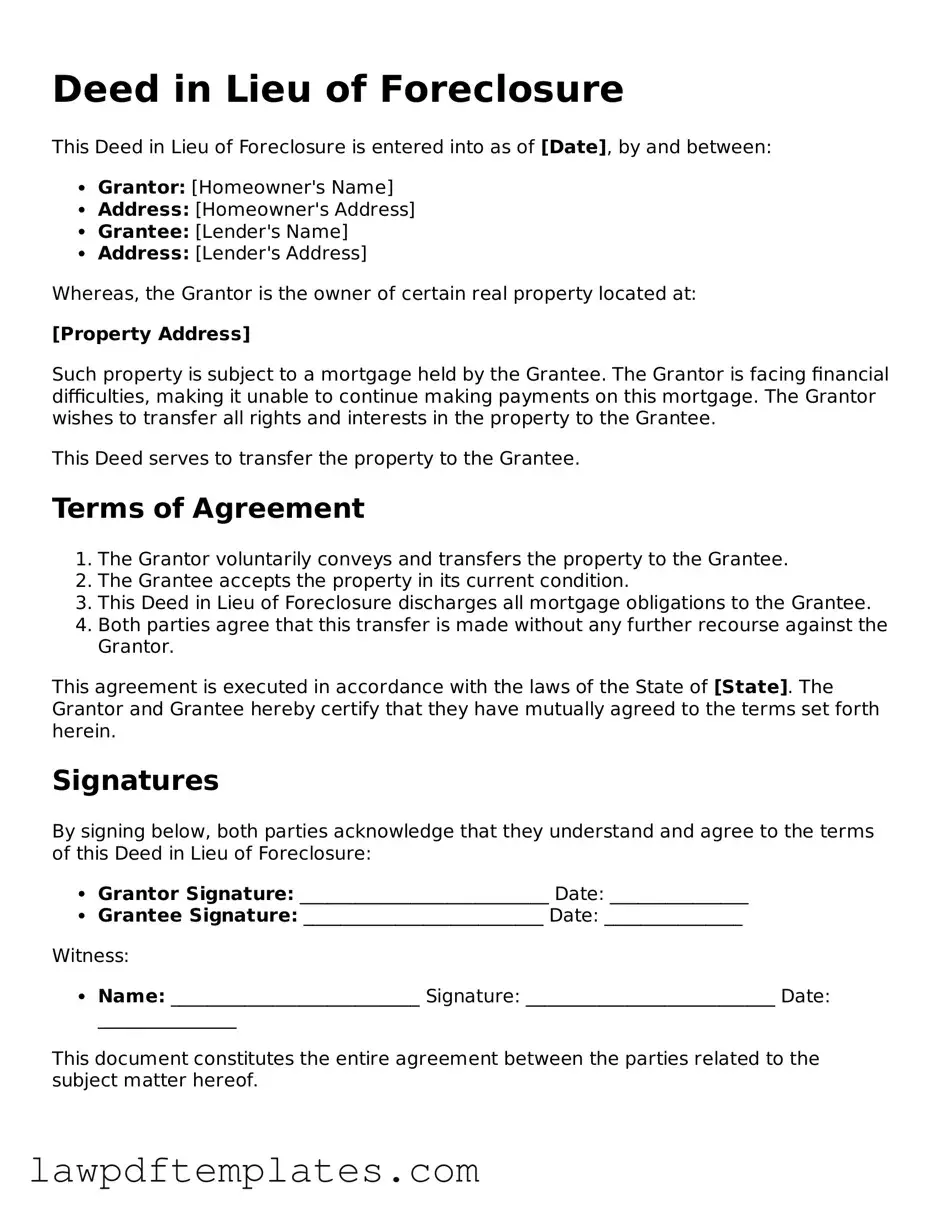Deed in Lieu of Foreclosure
This Deed in Lieu of Foreclosure is entered into as of [Date], by and between:
- Grantor: [Homeowner's Name]
- Address: [Homeowner's Address]
- Grantee: [Lender's Name]
- Address: [Lender's Address]
Whereas, the Grantor is the owner of certain real property located at:
[Property Address]
Such property is subject to a mortgage held by the Grantee. The Grantor is facing financial difficulties, making it unable to continue making payments on this mortgage. The Grantor wishes to transfer all rights and interests in the property to the Grantee.
This Deed serves to transfer the property to the Grantee.
Terms of Agreement
- The Grantor voluntarily conveys and transfers the property to the Grantee.
- The Grantee accepts the property in its current condition.
- This Deed in Lieu of Foreclosure discharges all mortgage obligations to the Grantee.
- Both parties agree that this transfer is made without any further recourse against the Grantor.
This agreement is executed in accordance with the laws of the State of [State]. The Grantor and Grantee hereby certify that they have mutually agreed to the terms set forth herein.
Signatures
By signing below, both parties acknowledge that they understand and agree to the terms of this Deed in Lieu of Foreclosure:
- Grantor Signature: ___________________________ Date: _______________
- Grantee Signature: __________________________ Date: _______________
Witness:
- Name: ___________________________ Signature: ___________________________ Date: _______________
This document constitutes the entire agreement between the parties related to the subject matter hereof.
